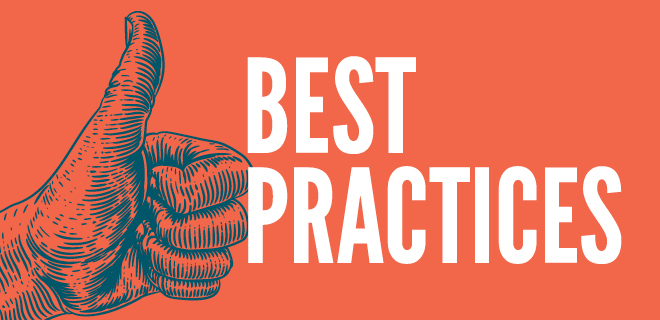
Ensuring your website is accessible for all members of your audience can have a lasting impact on revenue.
Everything that glitters isn’t gold; this age-old saying may apply to your favorite website when thinking about the true measure of its accessibility. About 1.3 billion people are living with a disability today, highlighting that there are tons of people experiencing broken digital experiences for reasons well out of their control.
Digital accessibility platform, AudioEye, scanned over 40,000 enterprise sites and discovered that the average page has 37 different elements (including links or images) that fail one of the success criteria for the Web Content Accessibility Guidelines (WCAG).
This is a huge issue, and finding a scalable, ongoing solution is something that every organization needs to do. So, how can publishers be more conscious of instances where digital accessibility falls short? How does this impact their revenue
“It’s important to recognize that not every accessibility barrier is equal,” said David Moradi, CEO AudioEye. “In our report, we used the analogy of potholes and road closures. A pothole will slow you down, but a closed road will force you to turn around. For organizations, a good approach is to start with the most important pages on their site — and think about the goal of each page.”
Read below to learn more about all the accessibility barriers and how to steer clear of them in the future. You don’t want to miss out on revenue over something that can be fixed.
Yakira Young: What is an accessibility barrier, and what are the five most common accessibility barriers that you are seeing? 
David Moradi: An accessibility barrier is anything that stops someone from completing a task online or forces them to get help, find a workaround, or spend an undue amount of time or effort doing the same thing as someone without a disability.
The five most common barriers we found after scanning more than 2 million enterprise web pages were:
- Vague or missing image alt text can make it hard for some people with visual and cognitive impairments to understand what an image is supposed to illustrate.
- Links that did not clearly describe where clicking them would take users.
- Missing keyboard support that prevented keyboard-only users from interacting with elements on a page, such as buttons and customized dropdowns.
- Missing page titles, which prevented screen reader users from knowing what information was on the page.
- Missing form labels which can make it hard for screen reader users to know what information to enter into each field.
YY: While 91% of consumers prefer visual content over text-based content, not everyone can see. In fact, four out of seven images are not accessible to people with visual impairments. What can publishers do to include people who cannot perceive images visually?
DM: One of the traps that many websites fall into is treating alt text like something people won’t see. So you’ll run into these descriptions that either feel like names (i.e., “shirt-front.jpg”) or are completely stuffed with keywords for search engines.
In reality, non-sighted users rely on alt text to understand what an image is supposed to convey or illustrate. So, going back to the shirt example, all of those details that sighted visitors can pick up from looking at an image (e.g., how does the shirt fit? Is it roomy, or is it fitted through the waist? If it has a pattern, what does the pattern look like?) should be included in the alt text description. Otherwise, they’re unable to make as informed a buying decision as a sighted user.
Publishers should pay as much attention to the alt text as they do the composition of an image. What are they trying to highlight? Is there any important text in the image? And then, make sure that information also makes its way into the alt text description.
YY: Regarding alt text, what can publishers do to ensure their image accessibility is up to par?
DM: We’re always asking members of the disability community for tips like this, and one of them shared a great framework with us recently: Whatever your image is, pretend you’re describing it to your friend over the phone.
If it was a picture of your beach vacation, you probably wouldn’t just tell your friend, “It’s a picture of me at the beach.” You’d explain what you were doing, who you were with, whether it was crowded, the weather. Those contextual details help paint a clearer picture of the image, and it’s the information people want.
That’s the goal of alt text. Making sure that everyone can understand and enjoy an image, even if they can’t perceive it visually.
YY: Describe the difference between an image as a link and a regular still image. How do their rules about accessibility differ?
DM: Many websites will use icons and graphics instead of links. For example, you might have an icon of a headset that takes them to a customer support page. Instead of writing an alt text description of the icon (i.e., “line drawing of headset”), you should describe where clicking the image will take users, i.e., Contact Support.
For screen reader users, this makes it clearer where clicking the link will take them.
YY: What is the “link” between accessibility and descriptive links?
DM: If you think about how you browse a website, you probably start by scanning the big headlines and colorful call-to-action (CTA) buttons. All of the things that help you quickly figure out what the page is about and where you want to go.
Most screen reader users do the same thing. Only they use their keyboard to jump between headers and links quickly. If a link isn’t descriptive (i.e., one that simply says “click here” without any additional context), it breaks that flow and forces them to slow down and try to figure out where the link is pointing based on surrounding information.
YY: How can a keen focus on accessibility lead to publishers bringing in more revenue?
DM: There are a few areas where accessibility can support ROI.
The biggest is reaching a really large market that’s been historically underserved. Along with friends and family, people with disabilities control $13 trillion globally in disposable income. Yet 97% of the internet is inaccessible to people with disabilities. They’re used to websites not working for them. But they tend to become loyal customers when they find one that does. And they’re often excited to tell friends and family about it.
There’s also a fair amount of overlap between the best practices of accessible design and what people might call “good” user design.
For example, the World Wide Web Consortium (W3C) has several best practices for clear and understandable content, such as using bulleted lists or putting the key takeaway or objective at the start of a paragraph.
These recommendations aim to remove confusion for people with dyslexia and other learning disabilities. But it could just as easily be a general writing best practice.
Finally, it’s good for a company’s brand. There’s a lot of enthusiasm for DEI initiatives, and accessibility is a big part of that. Plenty of people today want to align with brands that invest in accessibility.